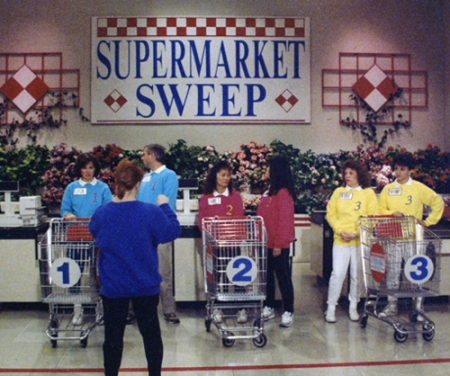Copied from https://uncmfa.wordpress.com/
CUR(eat): Educate Your Mind, Feed Your Stomach

Can art be tasted?
In this next exercise we explore the intersection between art and
ecology through the politics of food. For Monday Oct. 8th, Seminar 4- we
will meet at my house in Carrboro. In the spirit of artist Elaine Tin
Nyo and others such as Rirkrit Tiravanija, we will gather for a potluck.
We are also going to discuss the first set of readings as lead by their
respective groups (we will have a projector available if needed).
First things first…
Do you recall that old Supermarket Sweep reality show that
was revived in the 90′s?? Where one races against the clock, running
around a supermarket filling up their shopping carts and the value of
the items determined the winning team? Well…yes, you guessed it. I can
almost guarantee you that it will be a first = grocery shopping
challenge.

The Challenge: A week from tomorrow, I will ask
you to meet at Whole Foods in Chapel Hill @ 6:30pm. With a crisp $20
bill, you will purchase the ingredients for a recipe of the dish you
will make for the potluck. But spending less than $20 at Whole Foods is a
bigger challenge than the last project, you may be thinking…well yes,
so the challenge will be to use the least amount of money and still have
all of your ingredients.

The Dish: UNC has launched an academic theme about
water for the next couple of years- issues dealing with availability
around the world, health/sanitation, the economy, social development,
and education. If you remember at our first seminar, I provided you with
a list from UNICEF of countries around the world experiencing disasters
in drought. Here is the list once again —> UNICEF.
I thought that we would combine this academic plan with some of the topics in our readings.
1. Choose one of the countries on the list and prepare a
traditional meal from that country. You may borrow the recipe as you
find it, or you may alter it to make it your own. Share it at the
potluck.
2. In the process of researching your recipe- think about the
implications of drought for the making of this dish in its native
country- if not as a conversation piece then as an educational tidbit.
3. Share this recipe on the class blog for all of us to have (including an image).

The Venue: My back yard. This is probably one of
the largest back yards in Carrboro and often mistaken for a public park.
A small piece of history is still visible among all the development
around- old barns, dinner bell- remnants of the old family farm that
date back to the 1930′s even 20′s. There used to be an old white horse
fence surrounding the property, which was recently removed a few years
ago. I always found it interesting that even though it may look like
private property, the removal of the fence has welcomed carrborites to
now see it as a free public space.
We will have our potluck in the field. A sight for potential welcoming of the passerby.
image: from Elaine Tin Nyo’s “I want to Make Some Tamales”

















